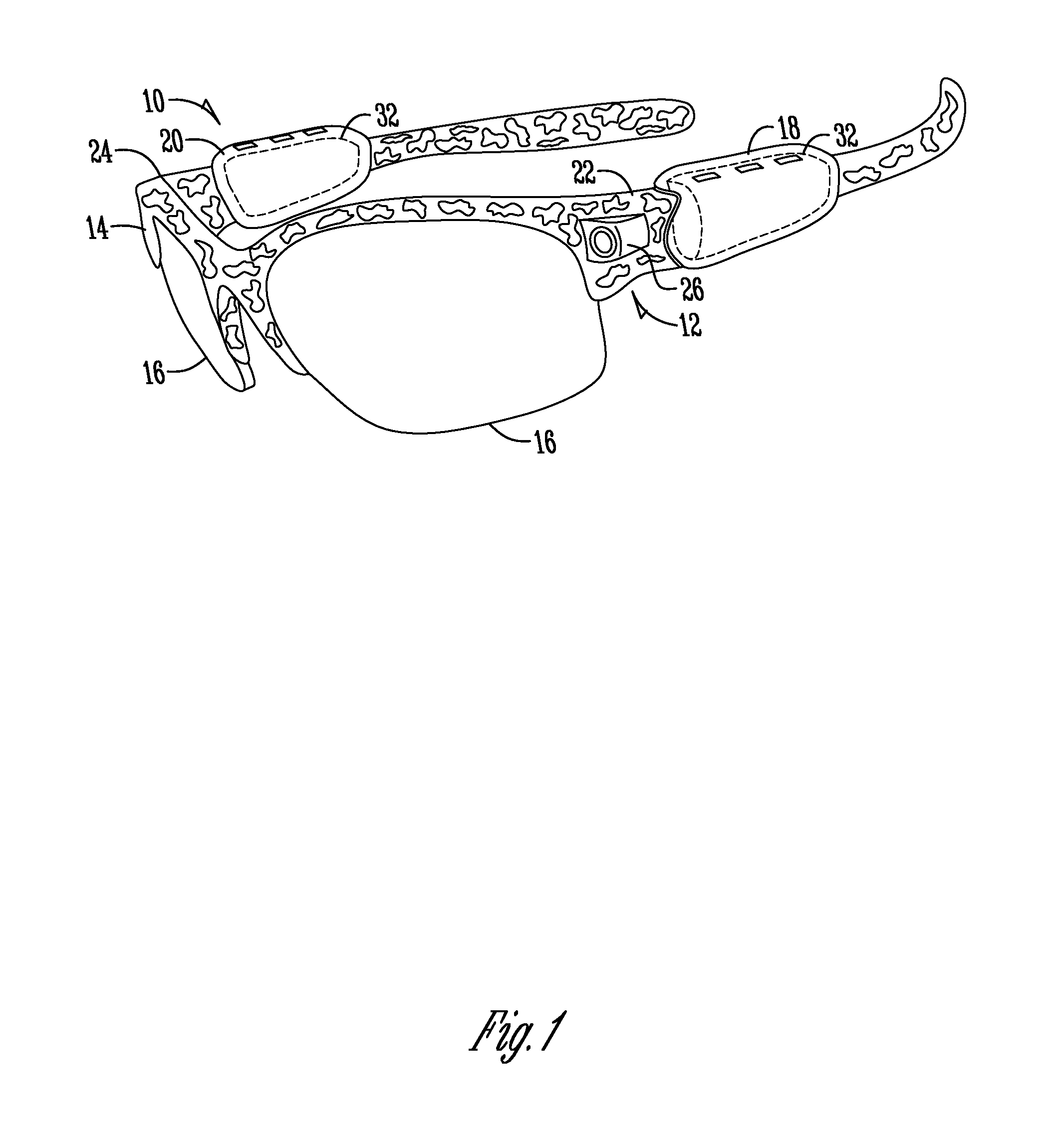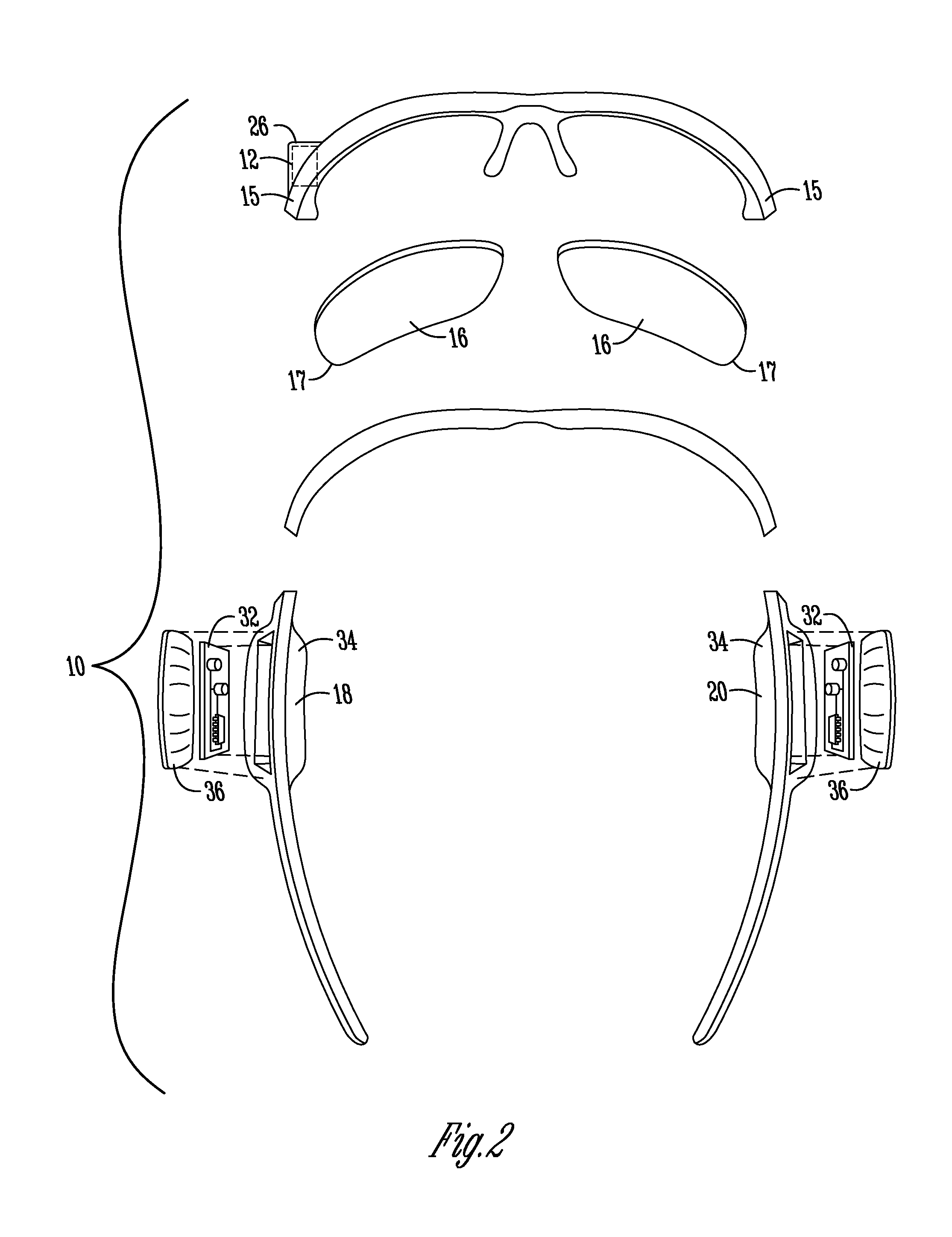Eyewear for acquiring video imagery
- Summary
- Abstract
- Description
- Claims
- Application Information
AI Technical Summary
Benefits of technology
Problems solved by technology
Method used
Image
Examples
Embodiment Construction
[0023]FIG. 1 illustrates a device 10. The device 10 includes an eyewear frame 14. Here, the eyewear frame 14 is patterned with camouflage as may be appropriate for certain uses of the device 10, such as by an individual who is recording a hunt. Although potentially advantageous, the eyewear frame 14 need not be patterned with camouflage and may be a solid color or otherwise patterned. The frame 14 supports a pair of lenses 16. The lenses 16 may be prescription lenses, polycarbonate shooting lenses, polarized lenses, non-polarized lenses, or other type of lenses. A pair of temples 18, 20 are pivotally connected to the frame 14 at hinges 22, 24.
[0024]The device 10 includes an image sensor 12 with an associated housing 26. The image sensor 12 allows for acquiring video imagery. As shown in FIG. 1, the image sensor 12 is positioned on the side of the eyewear frame 14. The housing 26 is located between an outer lateral edge 17 of one of the lenses 16 and an outer lateral edge 15 of the f...
PUM
 Login to View More
Login to View More Abstract
Description
Claims
Application Information
 Login to View More
Login to View More - R&D
- Intellectual Property
- Life Sciences
- Materials
- Tech Scout
- Unparalleled Data Quality
- Higher Quality Content
- 60% Fewer Hallucinations
Browse by: Latest US Patents, China's latest patents, Technical Efficacy Thesaurus, Application Domain, Technology Topic, Popular Technical Reports.
© 2025 PatSnap. All rights reserved.Legal|Privacy policy|Modern Slavery Act Transparency Statement|Sitemap|About US| Contact US: help@patsnap.com



